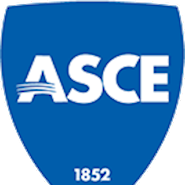ASCE Reads is a regular series on Civil Engineering Source highlighting the latest titles from the ASCE Library, giving you an in-depth look at cutting-edge research and innovations in the civil engineering industry.
When it comes to year-in-review summaries, a list of the most popular books is an excellent lens through which to consider the time period.
Yes, even, among civil engineers.
Maybe especially among civil engineers.
Here is a look at some of 2021’s top titles in the ASCE Library.
Residential Land Development Practices: A Textbook on Developing Land into Finished Lots
For more than 10 years, Residential Land Development Practices has been a favorite resource for showing owners, local officials, and real estate professionals the opportunities and pitfalls that accompany residential development projects. Reorganized to enhance clarity and usefulness, this new edition presents proven techniques and tools for developing vacant land into buildable lots.
MOP 144: Hazard-Resilient Infrastructure: Analysis and Design
Hazard-Resilient Infrastructure: Analysis and Design, MOP 144, provides guidance and an underlying framework for creating consistency across hazards, systems, and sectors in the design of new infrastructure systems. The book also discusses enhancing the resilience of existing systems and relates this framework to the economics associated with a system lifecycle, including organizational and socioeconomic considerations.
ASCE/SEI 43-19: Seismic Design Criteria for Structures, Systems, and Components in Nuclear Facilities
Seismic Design Criteria for Structures, Systems, and Components in Nuclear Facilities provides stringent design criteria for multiple aspects of nuclear facilities. Because of the potential risk with nuclear hazards, nuclear facilities need to have a much lower probability than conventional facilities of sustaining structural damage caused by an earthquakes. The goal of this standard is to ensure that nuclear facilities can withstand the effects of earthquake ground-shaking while retaining target performance goals.
ANSI/ASCEI/CI 71-21: Identifying, Quantifying, and Proving Loss of Productivity
ANSI/ASCE/CI 71-21 describes key labor costs as typically the most variable and a major component of overall project cost. It provides guidance on tracking and measuring labor productivity to help prevent, mitigate, and recover cost overruns and to address loss of productivity disputes and claims, which are increasing in frequency and magnitude.
GSP 322: Remote Sensing for Monitoring Embankments, Dams, and Slopes: Recent Advances
Remote Sensing for Monitoring Embankments, Dams, and Slopes: Recent Advances provides information on selecting and deploying a monitoring network to assess the behavior, geometry, total and differential EDS movement, and potential risks of the EDS movement on people and infrastructure.
Topics include general technologies used for EDS monitoring, selecting and installing networked sensors for predictive analytics and image recognition, applying monitoring techniques in the design of early warning systems, case studies, and support for decision-makers in implementing early warning systems.
Impacts of Future Weather and Climate Extremes on United States Infrastructure: Assessing and Prioritizing Adaptation Actions
Impacts of Future Weather and Climate Extremes on United States Infrastructure: Assessing and Prioritizing Adaptation Actions summarizes the likely changes in various extreme meteorological and hydrological events and assesses the vulnerabilities of infrastructure within critical sectors and their collective interdependencies. The authors also provide frameworks that decision-makers can use to prioritize limited budgetary resources for adaptation efforts.



